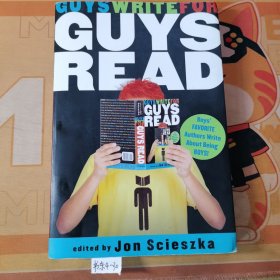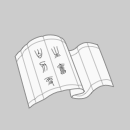
【预订】Write for Your Life
书籍内容简介可联系客服查阅,查书找书开票同样可以联系客服
¥ 178 ¥ 178 九五品
仅1件
作者Anna Quindlen
出版社Random House Publishing Group
ISBN9780593229835
出版时间2022-04
装帧精装
定价178元
货号YB-88933
上书时间2024-06-28
- 最新上架
商品详情
- 品相描述:九五品
- 商品描述
-
商品简介
NATIONAL BESTSELLER • In this clarion call to pick up a pen and find yourself from “one of our most astute chroniclers of modern life” (The New York Times Book Review), #1 New York Times bestselling author Anna Quindlen shows us how anyone can write, and why everyone should.
What really matters in life? What truly lasts in our hearts and minds? Where can we find community, history, humanity? In this lyrical new book, the answer is clear: through writing. This is a book for what Quindlen calls “civilians,” those who want to use the written word to become more human, more themselves.
Write for Your Life argues that there has never been a more important time to stop and record what we are thinking and feeling. Using examples from past, present, and future—from Anne Frank to Toni Morrison, from love letters written after World War II to journal reflections from nurses and doctors today—Write for Your Life vividly illuminates the ways in which writing connects us to ourselves and to those we cherish. Drawing on her personal experiences not just as a writer but as a mother and daughter, Quindlen makes the case that recording our daily lives in writing is essential.
When we write we not only look, we see; we not only react but reflect. Writing gives you something to hold onto in a changing world. “To write the present,” Quindlen says, “is to believe in the future.”
全国畅销书•在这支响亮的号角中,我们拿起笔,发现自己来自“我们现代生活最敏锐的编年史家之一”。 (《纽约时报书评》),#1《纽约时报》畅销书作家安娜·昆德伦 (Anna Quindlen) 向我们展示了每个人如何写作,以及为什么每个人都应该写作。
生活中真正重要的是什么?什么才是真正留在我们心里的?我们在哪里可以找到社区、历史、人性?在这本抒情的新书中,答案很明确:通过写作。这是一本为昆德伦所说的“平民”而写的书。那些想要使用书面文字变得更加人性化、更加自我的人。
为你的生活而写作认为,现在是停止和思考的更重要时刻。记录我们的想法和感受。通过过去、现在和未来的例子——从安妮·弗兰克到托妮·莫里森,从二战后写的情书到今天护士和医生的日记反思——为你的生活而写生动地阐明了这些写作将我们与我们自己以及我们所珍惜的人联系起来。昆德伦不仅根据自己作为作家的个人经历,而且作为母亲和女儿的个人经历,证明用写作记录我们的日常生活是至关重要的。
当我们写作时,我们不仅看,我们看到;我们不仅做出反应,而且进行反思。写作可以让你在不断变化的世界中有所保留。 “写下现在,”昆德伦说,“就是相信未来。”
作者简介
Anna Quindlen is a novelist and journalist whose work has appeared on fiction, nonfiction, and self-help bestseller lists. She is the author of many novels: Object Lessons, One True Thing, Black and Blue, Blessings, Rise and Shine, Every Last One, Still Life with Bread Crumbs, and Miller's Valley. Her memoir Lots of Candles, Plenty of Cake was a #1 New York Times bestseller. Her book A Short Guide to a Happy Life has sold more than a million copies. While a columnist at The New York Times she won the Pulitzer Prize and published two collections, Living Out Loud and Thinking Out Loud. Her Newsweek columns were collected in Loud and Clear.
精彩内容
Chapter 1
Infinitive
...
One Friday in mid-June many years ago, a girl leapt from her bed and went into her parents’ room, then downstairs. In the living room her family gathered so that she could open her presents. Thirteen. It’s a birthday of moment, the first teenage year, the beginning of becoming a woman and an adult.
Perhaps as a suggestion of that becoming, she was given a brooch. Perhaps as a reflection of her role as the youngest, the child, she was given a jigsaw puzzle and some candy. But the present she liked best was given to her by her mother and father. It was a diary covered in red-and-white plaid cloth. She called it Kitty. On the first page she wrote, “I hope I shall be able to confide in you completely, as I have never been able to do in anyone before, and I hope that you will be a great support and comfort to me.”
It was 1942. By 1945 the girl would be dead of typhus, murdered really, and Kitty would be on her way to becoming a kind of literary living legend.
The girl was Anne Frank, the daughter of Reform Jews living in Amsterdam. Less than a month after that birthday, Anne took Kitty with her into hiding in an attic area used for storage atop her father’s business offices. “The four of us were wrapped in so many layers of clothes it looked as if we were going off to spend the night in a refrigerator,” she wrote, “and all that just so we could take more clothes with us. No Jew in our situation would dare leave the house with a suitcase full of clothes.”
“It’s so amazing,” a girl once said to me when I was speaking at a middle school book fair, “that a thirteen-year-old girl was able to write a bestselling book.”
What sometimes gets lost, in the many decades since her father first published Anne Frank’s diary, in the millions upon millions of copies it has sold in dozens of languages, is that when she first began, Anne Frank wasn’t writing a book. She was talking to herself. And she was talking to herself in a way that any of us can do too. She was finding solace in writing her life, her thoughts and feelings, day after day. Words to live by.
Anne Frank was living through an extraordinary experience, an extraordinary time, an extraordinary horror, and to ground herself she was committing everything to paper, much of it not particularly profound. The curtains at the windows, the cupboard to hide the door. She writes about how everyone thinks Anne is badly behaved, about how much she hates algebra and geometry. Eventually she ran out of space in the birthday diary and continued in exercise books and accounting ledgers from the office below. In some ways she sounds like a typical teenager: a mother who doesn’t understand her, a boy she wants to be alone with. In others, surely not: the toilet that cannot be flushed for the entire day, the enforced silence to forestall the unexpected footsteps on the stairs, the sound of those footsteps evoking terror because of what the family Frank has heard is happening in the world outside the attic.
But Anne’s diary is also instructive about how writing, for anyone, for everyone, for you and for me, can normalize the abnormal and feed the spirit, whether during exceptional moments of history or just ordinary moments of everyday life. For those far along in the span of their lifetimes, writing offers an opportunity to look back, a message in a bottle that says, This was life. This was how it was, this was who I was. For young people like Anne, it’s a way of understanding yourself, hearing your own voice, puzzling out your identity.
Journals and diaries were once a given for girls of a certain age; many a woman has cleaned out the childhood bedroom in which she once shut out the world and discovered a world within, within the pages of a forgotten book festooned with flowers or covered in fabric, written in a hand recognizable but perhaps hardened by the years. We cringe; we read. Was this really who we once were? Yes, it is.
In fact it is part of how we discovered who we once were, by writing it down for an audience of one: me, myself, and I. The revelations sidle in and slip out, the parties, the meetups and hangouts. The night of the terrible drunk. The day of the great disappointment. Or sometimes, even sadder, we must read between the lines. Some diary entries can reflect a fantasy of adolescence, filled with friends and so very much fun, when from the safe vantage point of maturity it is possible to remember too the misery, the insecurity. There’s no question that at various times we lie to ourselves when we write. I don’t imagine there are many mothers who have a baby book that contains musings about unbearable fatigue or the rigors of breastfeeding or the fear of not being cut out for the job. Kierkegaard said that life must be lived forward but can only be understood backward.
Writers don’t have a corner on the market of writing, although sometimes that is how it seems to feel. Centuries ago literacy, the ability to read and therefore to write, was the purview almost exclusively of the aristocracy and the clergy. But by the early twentieth century the majority of Americans could read, and many of them wrote, letters and journals and personal histories. Literacy had once been a way of keeping people in their place, poor people, enslaved people, immigrants. For centuries only the rich or highly educated could read, write, and so have a voice. When literacy was democratized, it changed everything because the voices of the few and the privileged were supplanted by a chorus of the many, from many walks of life. People used words, not simply for treatises or sacred texts but to connect with others like themselves, who might not be learned but were certainly human. Writing was a kind of handshake or embrace: Hello, I see you. I want to know and understand you. I want to understand myself.
That explains why Erin Gruwell did what she did at Wilson High School in Long Beach, California, a place labeled many years ago by MTV the “gangsta rap capital” of the United States. In 1994 Erin showed up at Wilson, and like many a newbie teacher she was saddled with what she was told were the hard cases, the first-year students who had learning disabilities, disciplinary issues, even juvenile records. “Unteachable” was the word that was used.
Her plans for the future, for their future, began to unfold when, as a student teacher, she intercepted a racist caricature of a boy in her class, a student who, rumor had it, had once threatened a teacher with a gun. The picture, drawn by one of his classmates, was a study in stereotypes, the features of a Black student inflated to grotesque proportions. Erin told the class that it was exactly the type of propaganda the Nazis had used during the Holocaust when they circulated caricatures of Jewish citizens. Seeing the blank stares, she asked who had h
相关推荐
-

【预订】Write for Your Life
九五品成都
¥ 178.00
-

【预订】Write for Your Life
九五品广州
¥ 178.00
-

【预订】Write for Your Life
九五品广州
¥ 178.00
-

【预订】Write for Your Life
九五品广州
¥ 178.00
-

You can write for magazines
八五品昆明
¥ 20.00
-

Guys Write for Guys Read
八五品廊坊
¥ 69.00
-

【预订】Lessons for Living
九五品成都
¥ 128.00
-

【预订】Spells for Forgetting
九五品成都
¥ 88.00
-

【预订】Lessons for Living
九五品广州
¥ 128.00
-

【预订】Lessons for Living
九五品广州
¥ 128.00
— 没有更多了 —












以下为对购买帮助不大的评价